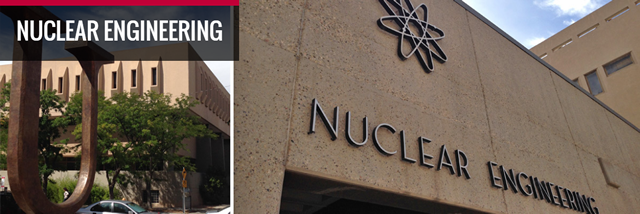
Nuclear Engineering ETDs
Publication Date
1-28-2015
Abstract
The traditional method of safeguarding nuclear facilities, nuclear material accountancy (NMA), faces many challenges when applied to pyroprocessing facilities. To aid in the safeguarding of these facilities, process monitoring (PM) is being investigated as a complementary method to NMA. PM takes general process data, such as density, current etc., and applies it to safeguards through the use of a statistical framework. Signature Based Safeguards (SBS), a proposed statistical framework for the application of PM techniques, identifies anomalous scenarios and subsequently identifies and detects their respective PM signatures from a system of sensors. This work focuses both on assisting SBS through identifying anomalous scenarios, and on the computer modeling of these failure modes and the PM signatures for them. The anomalous scenarios investigated were mechanical failure modes with potential safeguards-significance as they could lead to the deposition of plutonium and other actinides in the final uranium product ingot. The signatures of these anomalous scenarios were primarily radiation signatures from a coincidence counter that is used to analyze the final ingots. Several different failure modes were identified for both the electrorefiner and the cathode processor. The signatures for these failure modes were then determined by coupling two separate computer models. The first model is a FORTRAN-based electrorefiner code named ERAD capable of modeling the mass transport of metals within an electrorefiner. The second model was an MCNP-based simulation of the Canberra JCC-31 High Level Neutron Coincidence Counter. First, the identified failure modes were simulated by changing ERAD inputs. ERAD calculated an elemental mass composition at the cathode which was then used as the final ingot composition. The final ingot composition was analyzed for single and double neutron coincidence count rates using the MCNP model. The results demonstrate significant radiation signatures for the presence of plutonium as a result of the electrorefiner failure modes. Signatures from cathode processor failure modes were weak and thus warrant future investigation of better detectors for integration into a SBS framework.
Keywords
Pyroprocessing, Signature Based Safeguards, Computer Modeling
Document Type
Thesis
Language
English
Degree Name
Nuclear Engineering
Level of Degree
Masters
Department Name
Nuclear Engineering
First Committee Member (Chair)
Arthur, Edward
Second Committee Member
Cipiti, Benjamin
Third Committee Member
Prinja, Anil
Recommended Citation
Lafreniere, Philip. "IDENTIFICATION OF ELECTROREFINER AND CATHODE PROCESSING FAILURE MODES AND DETERMINATION OF SIGNATURE-SIGNIFICANCE FOR INTEGRATION INTO A SIGNATURE BASED SAFEGUARDS FRAMEWORK FOR PYROPROCESSING." (2015). https://digitalrepository.unm.edu/ne_etds/40


